Audi 2012 Annual Report Download - page 152
Download and view the complete annual report
Please find page 152 of the 2012 Audi annual report below. You can navigate through the pages in the report by either clicking on the pages listed below, or by using the keyword search tool below to find specific information within the annual report.-
 1
1 -
 2
2 -
 3
3 -
 4
4 -
 5
5 -
 6
6 -
 7
7 -
 8
8 -
 9
9 -
 10
10 -
 11
11 -
 12
12 -
 13
13 -
 14
14 -
 15
15 -
 16
16 -
 17
17 -
 18
18 -
 19
19 -
 20
20 -
 21
21 -
 22
22 -
 23
23 -
 24
24 -
 25
25 -
 26
26 -
 27
27 -
 28
28 -
 29
29 -
 30
30 -
 31
31 -
 32
32 -
 33
33 -
 34
34 -
 35
35 -
 36
36 -
 37
37 -
 38
38 -
 39
39 -
 40
40 -
 41
41 -
 42
42 -
 43
43 -
 44
44 -
 45
45 -
 46
46 -
 47
47 -
 48
48 -
 49
49 -
 50
50 -
 51
51 -
 52
52 -
 53
53 -
 54
54 -
 55
55 -
 56
56 -
 57
57 -
 58
58 -
 59
59 -
 60
60 -
 61
61 -
 62
62 -
 63
63 -
 64
64 -
 65
65 -
 66
66 -
 67
67 -
 68
68 -
 69
69 -
 70
70 -
 71
71 -
 72
72 -
 73
73 -
 74
74 -
 75
75 -
 76
76 -
 77
77 -
 78
78 -
 79
79 -
 80
80 -
 81
81 -
 82
82 -
 83
83 -
 84
84 -
 85
85 -
 86
86 -
 87
87 -
 88
88 -
 89
89 -
 90
90 -
 91
91 -
 92
92 -
 93
93 -
 94
94 -
 95
95 -
 96
96 -
 97
97 -
 98
98 -
 99
99 -
 100
100 -
 101
101 -
 102
102 -
 103
103 -
 104
104 -
 105
105 -
 106
106 -
 107
107 -
 108
108 -
 109
109 -
 110
110 -
 111
111 -
 112
112 -
 113
113 -
 114
114 -
 115
115 -
 116
116 -
 117
117 -
 118
118 -
 119
119 -
 120
120 -
 121
121 -
 122
122 -
 123
123 -
 124
124 -
 125
125 -
 126
126 -
 127
127 -
 128
128 -
 129
129 -
 130
130 -
 131
131 -
 132
132 -
 133
133 -
 134
134 -
 135
135 -
 136
136 -
 137
137 -
 138
138 -
 139
139 -
 140
140 -
 141
141 -
 142
142 -
 143
143 -
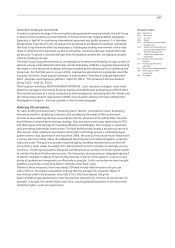 144
144 -
 145
145 -
 146
146 -
 147
147 -
 148
148 -
 149
149 -
 150
150 -
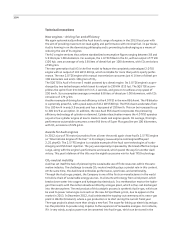 151
151 -
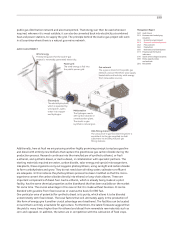 152
152 -
 153
153 -
 154
154 -
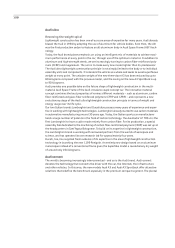 155
155 -
 156
156 -
 157
157 -
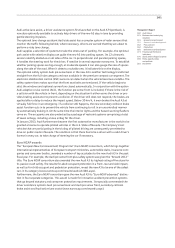 158
158 -
 159
159 -
 160
160 -
 161
161 -
 162
162 -
 163
163 -
 164
164 -
 165
165 -
 166
166 -
 167
167 -
 168
168 -
 169
169 -
 170
170 -
 171
171 -
 172
172 -
 173
173 -
 174
174 -
 175
175 -
 176
176 -
 177
177 -
 178
178 -
 179
179 -
 180
180 -
 181
181 -
 182
182 -
 183
183 -
 184
184 -
 185
185 -
 186
186 -
 187
187 -
 188
188 -
 189
189 -
 190
190 -
 191
191 -
 192
192 -
 193
193 -
 194
194 -
 195
195 -
 196
196 -
 197
197 -
 198
198 -
 199
199 -
 200
200 -
 201
201 -
 202
202 -
 203
203 -
 204
204 -
 205
205 -
 206
206 -
 207
207 -
 208
208 -
 209
209 -
 210
210 -
 211
211 -
 212
212 -
 213
213 -
 214
214 -
 215
215 -
 216
216 -
 217
217 -
 218
218 -
 219
219 -
 220
220 -
 221
221 -
 222
222 -
 223
223 -
 224
224 -
 225
225 -
 226
226 -
 227
227 -
 228
228 -
 229
229 -
 230
230 -
 231
231 -
 232
232 -
 233
233 -
 234
234 -
 235
235 -
 236
236 -
 237
237 -
 238
238 -
 239
239 -
 240
240 -
 241
241 -
 242
242 -
 243
243 -
 244
244 -
 245
245 -
 246
246 -
 247
247 -
 248
248 -
 249
249 -
 250
250 -
 251
251 -
 252
252 -
 253
253 -
 254
254 -
 255
255 -
 256
256 -
 257
257 -
 258
258 -
 259
259 -
 260
260 -
 261
261 -
 262
262 -
 263
263 -
 264
264 -
 265
265 -
 266
266 -
 267
267 -
 268
268 -
 269
269 -
 270
270 -
 271
271 -
 272
272 -
 273
273 -
 274
274 -
 275
275 -
 276
276 -
 277
277 -
 278
278 -
 279
279 -
 280
280 -
 281
281 -
 282
282 -
 283
283 -
 284
284 -
 285
285
 |
 |

155
Management Report
140 Audi Group
151 Business and underlying
situation
151 Economic environment
153 Research and development
162 Procurement
162 Production
165 Deliveries and distribution
173 Financial performance
indicators
176 Social and ecological aspects
190 Risks, opportunities
and outlook
201 Disclaimer
public gas distribution network and also transported. That energy can then be used whenever
required, wherever it is most suitable; it can also be converted back into electricity at combined
heat and power stations, to supply the grid. The principle behind the Audi e-gas project will work
in all countries where there is a natural gas mains network.
AUDI E-GAS PROJECT
Additionally, here at Audi we are pursuing another highly promising concept to replace gasoline
and diesel with entirely new biofuels that capture the greenhouse gas carbon dioxide during the
production process. Research continues into the manufacture of synthetic ethanol, or Audi
e-ethanol, and synthetic diesel, or Audi e-diesel, in collaboration with specialist partners. The
starting materials required are water, carbon dioxide, solar energy and special microorganisms.
Like plants, these organisms carry out oxygenic photosynthesis, using sunlight and carbon dioxide
to form carbohydrates and grow. They do not need clean drinking water; saltwater or effluent
are adequate. In this instance the photosynthesis process has been modified so that the micro-
organisms convert the carbon dioxide directly into ethanol or long-chain alkanes. These are
important components of diesel fuel. Audi e-ethanol, which is already being made at a pilot
facility, has the same chemical properties as the bioethanol that has been available on the market
for some time. The crucial advantage in this case is that it is made without biomass. It can be
blended with gasoline from fossil sources or used as the basis for E85 fuel.
One particular area of potential for synthetic diesel is its purity, which allows it to be blended
unrestrictedly with fossil diesel. The local factors that will ultimately apply in the production of
this form of energy give it another crucial advantage over bioethanol. The facilities can be located
on land that is entirely unsuitable for agriculture. Furthermore, the latest forecasts suggest that
the yield is many times higher than for ethanol and diesel from renewable raw materials such as
corn and rapeseed. In addition, the latter are in competition with the cultivation of food crops.
Wind energy
The starting point for the Audi e-gas
project is renewably generated electricity.
Power grid
The wind energy is fed into
the public power grid. Gas network
The e-gas is stored in the public gas
network and can therefore also supply
households and industry with energy
from renewable sources.
CNG filling station
The amount of e-gas fed into the system is
equivalent to the gas supplied to Audi
customers via existing natural gas
filling stations.
Methanation
The hydrogen reacts
with carbon dioxide in
a methanation plant.
The result: e-gas
(synthetic natural gas).
Electrolysis
The electrolysis plant,
which is operated by
wind power, splits
water into oxygen
and hydrogen.
CO
2
